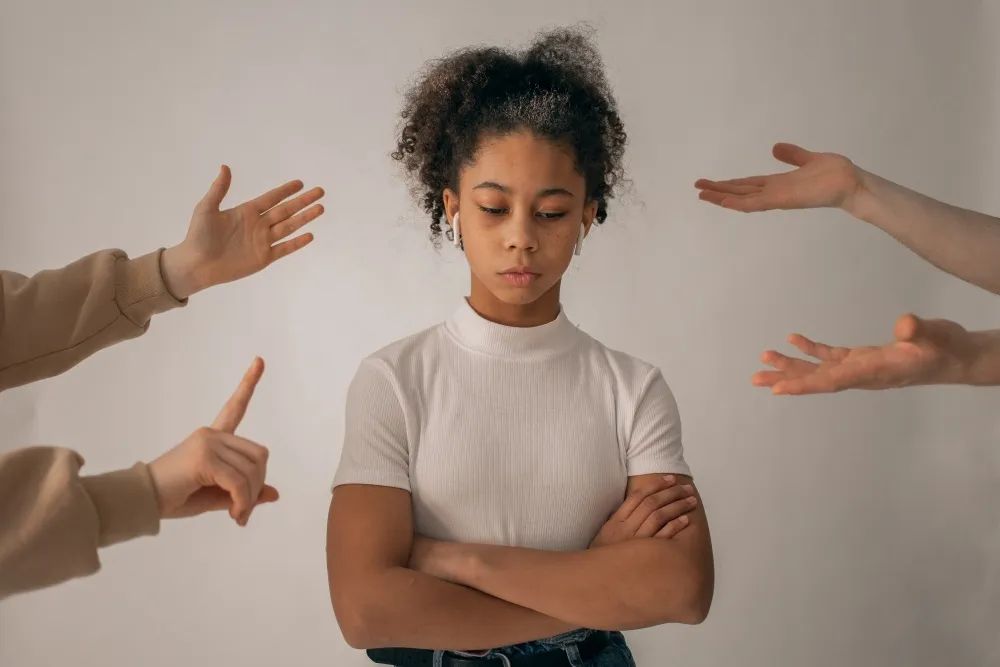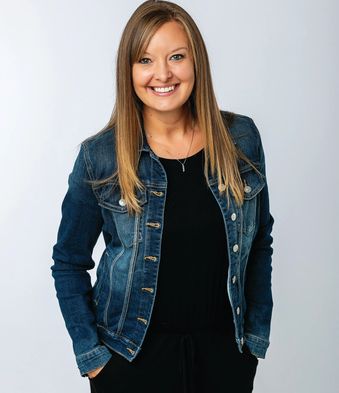
Positive Outlook, Difficult Situations: Youth Peer Pressure
September 2023
by Kelly McCandless
Back to school means new teachers, new schools and classrooms, new classmates… it can all be a bit overwhelming. As kids try to get their feet under them, new and old friendships emerge.
Even the youngest kids aren’t immune to peer pressure. Kids are shaped by the environment and people around them, whether positive or negative pressure. Let’s dig into some current trends and issues related to peer pressure in different age groups.
What is Peer Pressure
For anyone needing a refresher, peer pressure is simply influence by one’s peer group. We can differentiate between positive and negative peer pressure by considering the outcomes of the peer groups’ influence. Positive peer pressure generally aligns with an individual’s moral code and encourages engagement in age-appropriate, healthy behaviors. Negative peer pressure often manifests in behaviors that do not align with an individual’s belief system or values.
Peer Pressure Trends
I spoke with Chelsey Dotson, LCSW, who works with adolescents and young adults and specializes in self-esteem work, body image issues, anxiety management, depression, trauma, ADHD management, and more. According to Dotson, peer pressure peaks in grades 4 through 6. “There is immense pressure to grow up quickly. This can be in terms of play, interests, dating relationships, or friendship “drama.” There seems to be pressure to mirror the adult themes they encounter in their lives,” she explained. She also noted that the pressure to grow up quickly seems to be present with kids feeling they must conform to an unachievable standard. She calls attention to pressure to sexualize oneself, engage in unhealthy eating and exercise, spend money, and abandon what feels comfortable.
“I’ve also noticed that high schoolers are beginning to shift their relationship with peer pressure,” Dotson continued. “While it still exists, there seems to be a growing respect for individual value sets and boundaries.” She has seen high emotional intelligence in this generation of high school-aged kids, resulting in positive peer pressure to take responsibility for their emotional needs and boundaries. Other trends indicate that the use of mental health care among adolescents is more popular than ever, and a pattern of peer pressure is developing for teens to be socially conscious, holding one another accountable for hateful or problematic behaviors. “In short, it’s not cool to be a jerk anymore,” Dotson said.
And while it’s important not to write off the effort young people are making to do better, it’s also important to clarify that despite positive trend shifts, peer pressure or problematic youth behaviors have not been eliminated. And the side effects are as serious as ever.
Impacts of Peer Pressure
According to Dotson, peer pressure robs kids of their ability to build identity, which leads to a loss of direction or purpose and self-destructive behaviors. Combined, these things can break down relationships.
“Without a strong sense of identity, kids won’t be able to exercise their strengths and skills. Peer pressure increases stress levels and the likelihood of depression and low self-worth,” she explained, noting that young people struggle to find value because they aren’t engaged in things that truly belong to them.
Rigid thinking is often a tell-tale sign of a child experiencing peer pressure. Dotson noted that kids often fixate on certain interests or beliefs, have difficulty making decisions, or have negative and high-emotion responses to conversations challenging their thoughts. Kids may also exhibit withdrawn behavior, changes in sleep, extreme emotions, or new behaviors. It can be challenging to determine a long-term problem when kids in the pre-teen and teen years often feel a range of emotions. A good rule of thumb is that if concerns persist for over a week or two, it’s time to check in.
Getting Through the Hard Stuff
Teaching assertive communication is a terrific way to combat peer pressure, as well as helping kids understand what a boundary is (and isn’t). Dotson suggests role-playing what a confrontation with a friend might look like to help build a framework for how to act in a high-pressure moment. The bottom line is that, often, children don’t combat peer pressure simply because they don’t have the language to do so.
“Kids deserve credit for how far they have come,” Dotson remarked. “The emotional burden of being a young person in the current world is crushing. This generation has taken the impossible set of circumstances that have been thrown at them and become emotionally whole while fighting for the greater good.”
Dotson also called attention to parents' role in their children’s tendencies to participate in and succumb to peer pressure. If a child feels a lack of control, feels invalidated or unseen, or observe poor boundaries modeled for them, they are much more vulnerable to taking extreme measures to fit in. Gentle, firm, and open parenting is an immensely powerful tool.
For more on positive and negative peer pressure, check out my Simply Local blog post:
Originally printed in the September 2023 issue of Simply Local Magazine
Never miss an issue, check out SLM's digital editions here!






